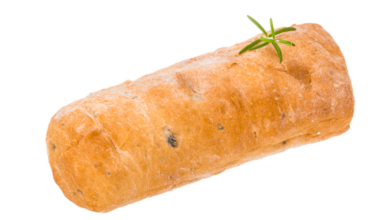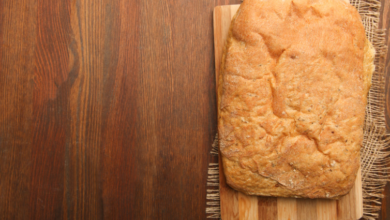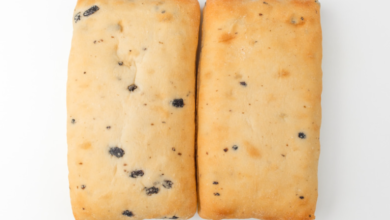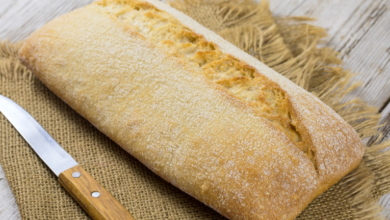Can I Make Ciabatta With Sourdough Starter? Let Me Tell You!
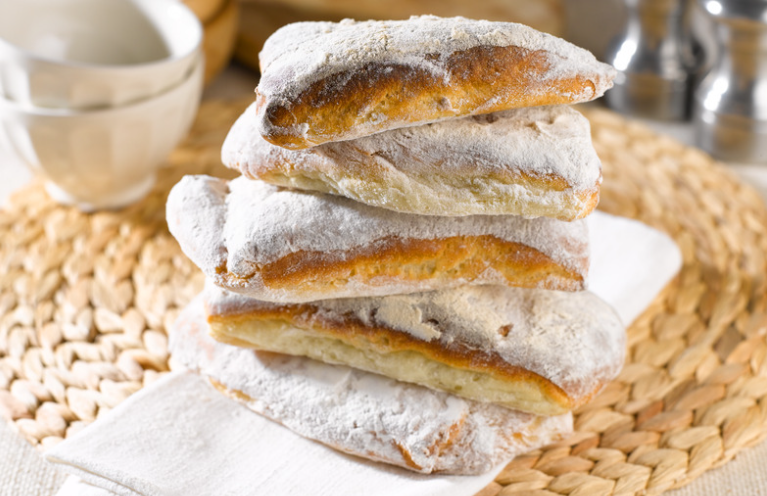
What To Know
- With a little patience and the right technique, you can transform your sourdough starter into a delectable ciabatta masterpiece.
- Making sourdough ciabatta is a rewarding culinary adventure that combines the benefits of sourdough with the irresistible charm of ciabatta.
- Use a stretch and fold technique throughout the bulk fermentation process to build strength in the dough.
The allure of sourdough bread lies in its complex flavor profile and airy, open crumb. While ciabatta is typically made with commercial yeast, many bakers wonder if it’s possible to recreate this Italian delight using a sourdough starter. The answer is a resounding yes! With a little patience and the right technique, you can transform your sourdough starter into a delectable ciabatta masterpiece.
The Benefits of Sourdough Ciabatta
Beyond its unique flavor, sourdough ciabatta offers several health benefits:
- Enhanced Digestion: Sourdough contains lactic acid bacteria, which aid digestion and can reduce bloating.
- Increased Nutrient Absorption: The fermentation process in sourdough bread breaks down certain nutrients, making them more easily absorbed by the body.
- Lower Glycemic Index: Sourdough bread has a lower glycemic index than regular bread, meaning it releases sugar into the bloodstream more slowly, preventing spikes in blood sugar levels.
Creating Your Sourdough Ciabatta
Ingredients:
- 1 cup (120g) active sourdough starter
- 3 cups (360g) bread flour
- 1 cup (240ml) warm water
- 1 teaspoon (5g) salt
Instructions:
1. Autolyse: In a large bowl, combine the bread flour and warm water. Mix until a shaggy dough forms. Cover and let rest for 30 minutes.
2. Add Starter and Salt: Add the sourdough starter and salt to the dough. Knead for 5-7 minutes until the dough becomes smooth and elastic.
3. Bulk Fermentation: Transfer the dough to a lightly oiled bowl. Cover and let rise in a warm place for 8-12 hours, or until doubled in size.
4. Stretch and Fold: Every 30-60 minutes, gently stretch and fold the dough to develop its gluten structure.
5. Shape: Divide the dough into two equal portions. Shape each portion into a rectangle, approximately 12 inches long and 6 inches wide.
6. Final Proof: Place the shaped doughs on a baking sheet lined with parchment paper. Cover and let rise for 2-3 hours, or until almost doubled in size.
7. Score: Using a sharp knife, score the tops of the doughs diagonally to create a distinctive ciabatta pattern.
8. Bake: Preheat oven to 500°F (260°C). Bake the ciabattas for 15-20 minutes, or until golden brown and crusty.
9. Cool: Let the ciabattas cool on a wire rack before slicing and serving.
Troubleshooting Your Sourdough Ciabatta
- Dense Crumb: Ensure you’re using a strong bread flour with a high protein content. Also, be patient with the bulk fermentation process and allow the dough to rise fully.
- Flat Bread: Check the activity of your sourdough starter before using it. It should be bubbly and double in size within 6-8 hours.
- Soggy Bottom: Use a baking stone or pizza stone to create a crisp crust. Preheat the oven thoroughly before baking.
Experimenting with Variations
- Whole Wheat Ciabatta: Substitute 1 cup (120g) of whole wheat flour for an earthy flavor and added fiber.
- Herb Ciabatta: Add chopped fresh herbs, such as rosemary, thyme, or oregano, to the dough for a savory twist.
- Cheese Ciabatta: Sprinkle grated Parmesan or cheddar cheese on top of the dough before baking for a cheesy delight.
Recommendations: Unleashing the Potential of Sourdough Ciabatta
Making sourdough ciabatta is a rewarding culinary adventure that combines the benefits of sourdough with the irresistible charm of ciabatta. With a little practice and these tips, you can create a loaf that will enchant your taste buds and impress your loved ones. Embrace the sourdough symphony and elevate your bread-making skills to new heights.
Questions We Hear a Lot
1. Can I use a different type of flour for sourdough ciabatta?
Yes, you can experiment with different flours, such as whole wheat, rye, or spelt. However, keep in mind that the hydration level of the dough may need to be adjusted.
2. How do I know if my sourdough starter is active enough?
An active sourdough starter should double in size within 6-8 hours at room temperature. It should also have a bubbly and slightly sour aroma.
3. Can I make sourdough ciabatta without kneading?
While kneading helps develop the gluten structure, it is possible to make sourdough ciabatta without it. Use a stretch and fold technique throughout the bulk fermentation process to build strength in the dough.


